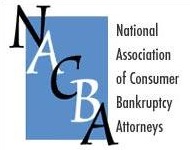 If you just ask the client for a bill from each creditor, you stand to miss tax and judgment lien creditors who don’t send a monthly bill.
If you just ask the client for a bill from each creditor, you stand to miss tax and judgment lien creditors who don’t send a monthly bill.
Schedule D of the bankruptcy schedules should call out each entity with a secured claim on the debtor’s assets. Car lenders and mortgage companies are at the forefront of our clients’ minds and are seldom missed. But a bankruptcy lawyer often has to dig for the statutory and involuntary creditors.
Creditors with statutory liens include taxing authorities, both income tax and property tax. They get their secured status, not by agreement with the debtor, but by operation of law.
Income tax liens: In order to have a perfected lien for bankruptcy purposes, the IRS must record the notice of lien in the county where the real property is located ( 26 USC 6323(f)(2)(A), or with respect to personal property, whether the taxpayer has his principal residence. 26 USC 6323(f)(2)(B). You can therefore find IRS liens either by looking in the records of the county recorder or on a transcript from the IRS.
Property tax liens will show on the records of the local tax collector. If the client hasn’t paid real property taxes in a while, the bankruptcy lawyer may have to dig to see if the mortgage lender has advanced the funds to pay the tax. I recently had to modify a Chapter 13 plan when the filed proofs of claim showed that the debtor had double counted the tax: we had it scheduled as a debt owed the county, when the tax had been paid, and was included in the lender’s proof of claim.
Judgment liens are involuntary and come into being as a result of judicial action. You need to understand the state law procedure by which a judgment becomes a lien. Where I practice, a judgment is unsecured until the judgment creditor takes the further step of recording an abstract of the judgment in the county where real property is located, or filing a notice of judgment with the Secretary of State to get a lien on personal property. Additionally, under California law, the service of an order for examination of a judgment debtor creates a lien on property for a year. So, become familiar with state law procedure for judgment liens and where you have to look to find them. I find myself lucky, too often, to learn from the client that he’s been sued: to get the rest of the story, I’m often on my own.
Once you’ve found the involuntary liens and scheduled them, you can consider whether they are really “secured claims” and what your client’s options are to avoid the lien. But that’s for another day.
Image courtesy of Wikimedia.org and Nevit Dilmen.







